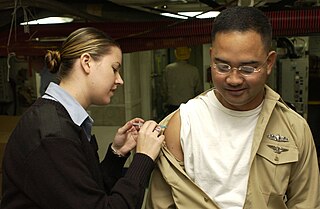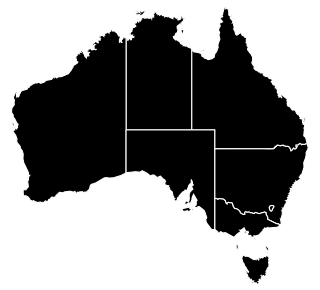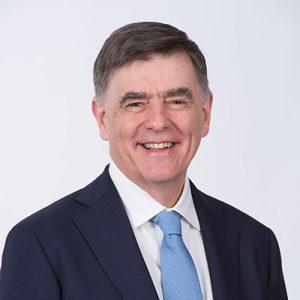
Influenza vaccines,colloquially known as flu shots or the flu jab,are vaccines that protect against infection by influenza viruses. New versions of the vaccines are developed twice a year,as the influenza virus rapidly changes. While their effectiveness varies from year to year,most provide modest to high protection against influenza. Vaccination against influenza began in the 1930s,with large-scale availability in the United States beginning in 1945.
The Hong Kong flu,also known as the 1968 flu pandemic,was an influenza pandemic that occurred between 1968 and 1970 and which killed between one and four million people globally. It is among the deadliest pandemics in history,and was caused by an H3N2 strain of the influenza A virus. The virus was descended from H2N2 through antigenic shift,a genetic process in which genes from multiple subtypes are reassorted to form a new virus.

The 2009 swine flu pandemic,caused by the H1N1/swine flu/influenza virus and declared by the World Health Organization (WHO) from June 2009 to August 2010,was the third recent flu pandemic involving the H1N1 virus. The first identified human case was in La Gloria,Mexico,a rural town in Veracruz. The virus appeared to be a new strain of H1N1 that resulted from a previous triple reassortment of bird,swine,and human flu viruses which further combined with a Eurasian pig flu virus,leading to the term "swine flu".

Australia had 37,537 confirmed cases of H1N1 Influenza 2009 and 191 deaths reported by Department of Health but only 77 deaths reported by the Australian Bureau of Statistics. The actual numbers are much larger,as only serious cases warranted being tested and treated at the time. Suspected cases have not been reported by the Department of Health and Ageing since 18 May 2009 because they were changing too quickly to report. Sources say that as many as 1600 Australians may have actually died as a result of this virus. On 23rd of May 2009 the federal government classified the outbreak as CONTAIN phase except in Victoria where it was escalated to the SUSTAIN phase on 3rd of June 2009. This gave government authorities permission to close schools in order to slow the spread of the disease. On 17 June 2009 the Department of Health and Ageing introduced a new phase called PROTECT. This modified the response to focus on people with high risk of complications from the disease. Testing at airports was discontinued. The national stockpile of antiviral drugs were no longer made available to people with the flu unless there were more than mild symptoms or a high risk of dying.

Theresa Tam is a Canadian physician and public servant who currently serves as the chief public health officer of Canada,who is the second-in-command of the Public Health Agency of Canada (PHAC). Tam initially took the role as acting CPHO following the retirement of her predecessor,Gregory Taylor,on 16 December 2016. She was formally appointed on 26 June 2017.
The COVID-19 pandemic in Australia was a part of the worldwide pandemic of the coronavirus disease 2019 caused by severe acute respiratory syndrome coronavirus 2. The first confirmed case in Australia was identified on 25 January 2020,in Victoria,when a man who had returned from Wuhan,Hubei Province,China,tested positive for the virus. As of 6 August 2022,Australia has reported over 11,350,000 cases and 19,265 deaths,with Victoria's 2020 second wave having the highest fatality rate per case.

Richard Hatchett is an American oncologist and epidemiologist who has been serving as chief executive officer of the Coalition for Epidemic Preparedness Innovations (CEPI) in Oslo and London since 2017. He was awarded the Secretary of Health and Human Services's Award for Distinguished Service.

Sir Jonathan Stafford Nguyen Van-Tam is a British physician specialising in influenza,including its epidemiology,transmission,vaccinology,antiviral drugs and pandemic preparedness.

The National Cabinet is the primary Australian intergovernmental decision-making forum composed of the prime minister and state and territory premiers and chief ministers of Australia’s six states and two mainland territories.

Brendan Murphy is an Australian public servant,health executive and nephrologist who served as the Chief Medical Officer (CMO) of Australia from 4 October 2016 before serving as the Secretary of the Department of Health from 13 July 2020 until his retirement on 6 July 2023.

The 1957–1958 Asian flu pandemic was a global pandemic of influenza A virus subtype H2N2 that originated in Guizhou in Southern China. The number of excess deaths caused by the pandemic is estimated to be 1–4 million around the world,making it one of the deadliest pandemics in history. A decade later,a reassorted viral strain H3N2 further caused the Hong Kong flu pandemic (1968–1969).
Allison Joan McGeer is a Canadian infectious disease specialist in the Sinai Health System,and a professor in the Department of Laboratory Medicine and Pathobiology at the University of Toronto. She also appointed at the Dalla Lana School of Public Health and a Senior Clinician Scientist at the Lunenfeld-Tanenbaum Research Institute,and is a partner of the National Collaborating Centre for Infectious Diseases. McGeer has led investigations into the severe acute respiratory syndrome outbreak in Toronto and worked alongside Donald Low. During the COVID-19 pandemic,McGeer has studied how SARS-CoV-2 survives in the air and has served on several provincial committees advising aspects of the Government of Ontario's pandemic response.
Planning and preparing for pandemics has happened in countries and international organizations. The World Health Organization writes recommendations and guidelines,though there is no sustained mechanism to review countries' preparedness for epidemics and their rapid response abilities. National action depends on national governments. In 2005–2006,before the 2009 swine flu pandemic and during the decade following it,the governments in the United States,France,UK,and others managed strategic health equipment stocks,but they often reduced inventory after the 2009 pandemic in order to reduce costs.
The COVID-19 pandemic in Yukon is part of an ongoing global pandemic of coronavirus disease 2019 (COVID-19),an infectious disease caused by severe acute respiratory syndrome coronavirus 2 (SARS-CoV-2).

Rick Arthur Bright is an American immunologist,vaccine researcher,and public health official. He was the director of the Biomedical Advanced Research and Development Authority (BARDA) from 2016 to 2020. In May 2020,he filed a whistleblower complaint,alleging that the Trump administration ignored his early warnings about the COVID-19 pandemic and illegally retaliated against him by ousting him from his role and demoting him to a position at the National Institutes of Health. On October 6,2020,Bright resigned from the government. On November 9 he was named a member of President-elect Joe Biden's coronavirus advisory board.
The Chief Medical Officer is the principal health advisor to the Australian government. The position is a medical appointment,reporting to the Departmental secretary for the Department of Health and Aged Care. The position is responsible for the Office of Health Protection which itself has responsibility for biosecurity,immunisation and disease surveillance. The position is also responsible for "maintaining high-quality relationships between the department,the medical profession,medical colleges,universities and other key stakeholders". Other responsibilities of the position vary according to the skills and background of the officeholder. The position was created in November 1982 because the newly appointed Director-General of Health was not a doctor. The position is an advisory in nature and does not have executive or operational authority.

Shabir Ahmed Madhi,is a South African physician who is professor of vaccinology and director of the South African Medical Research Council Respiratory and Meningeal Pathogens Research Unit at the University of the Witwatersrand,and National Research Foundation/Department of Science and Technology Research Chair in Vaccine Preventable Diseases. In January 2021,he was appointed Dean of the Faculty of Health Sciences at the University of the Witwatersrand.
This article documents the chronology and epidemiology of SARS-CoV-2,the virus which causes the coronavirus disease 2019 (COVID-19) and is responsible for the COVID-19 pandemic in Australia during the first half of 2021.
The following is a timeline of the COVID-19 pandemic in the Republic of Ireland in 2022.

John Gerrard is currently the Chief Health Officer of Queensland,beginning the role in December 2021. Gerrard has a record in research of emerging infectious diseases and vaccine development,investigating AIDS in Australia and dealing with the Ebola outbreak in West Africa in 2014. Gerrard has additionally become notable during the COVID-19 Pandemic,previously working as a director of infectious diseases at the Gold Coast University Hospital and being the first doctor in Queensland to treat a COVID-19 patient.












